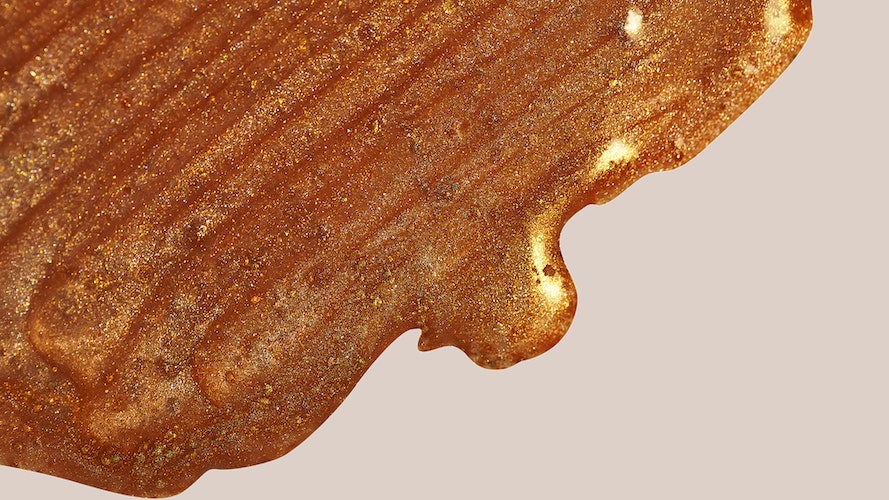Instagram’s “Pillow Talk Dermatologist” Shares the Nighttime Routine She Swears By
[email protected] | July 28, 23

If you haven’t seen Dr. Shereene Idriss on Instagram yet, you might want to read on. The NYC-based dermatologist regularly takes to Instagram stories to share skincare secrets through her series “Pillow Talk Dermatology.” Considering how flawless her skin is, it’s no wonder that more than 17,000 of her followers tune in to listen. Her direct messages are filled with questions about everything from whether it’s OK to mix retinols and salicylic acid (it’s not) to how to prevent smile line wrinkles (there are tons of different ways).
She’s become something of a social media concierge doctor. Idriss schools her fans with expert advice and reveals tips and tricks she swears by to keep her complexion smooth and radiant — from the comfort of her luxe-looking bed. So when I got the opportunity to chat with the queen of the evening routine about, well, her evening routine, I jumped at the chance. Here, she shares her step-by-step nighttime regimen, plus the treatments she couldn’t live without to maintain the skin of her (and all of our) dreams.
Spotlyte: Can you walk me through your nighttime routine?
Dr. Shereene Idriss: I take off my makeup with a gentle facial makeup remover — sometimes I use Neutrogena®, sometimes I use Garnier® Micellar Water. After I take my makeup off, I wash my face with a gentle cleanser. I’ve been using Vanicream® ($89) or CeraVe® ($14), [but] the type of cleanser doesn’t really matter. The only thing is if you have really dry skin, maybe use a lotion-based one instead of a gel-based cleanser.
After I do that, I usually exfoliate. I use these pads that we have in the office . . . they’re called ReBrightalyze ($80) . . . [and] Cane + Austin® is a great brand that I like that has glycolic acid pads ($88). I love them because they’re by percentage — you don’t have to use the strongest percent, you can kind of tailor it to your skin and how it responds. But I definitely exfoliate on average three to five times a week.
After I exfoliate, I use a moisturizing serum. The serum that I use is usually vitamin C serum or retinol — anything that’s basically helping my skin, like an antioxidant. Is it helping promote my collagen? Is it boosting it? At night, it’s probably a retinol.”
After that, I use moisturizer. A really nice facial moisturizer — something that’s really rich because you want to kind of seal it all in. Especially with the heaters in the winter, you want to make sure that your skin is getting really hydrated. It’s way too expensive, but I love La PrairieTM ($690). And I really love Weleda Skin Food® ($10) — you just wake up with a glow. I like Nia24® ($118) because of the niacin, I feel like it’s helping brighten some of the pigmentation and reversing the damage from summer. And the Biologique Recherche® Dermopurifiante ($104). I kind of alternate. Those are probably always the four that I play with, depending on whether or not I need something thicker. Is my skin too oily? Is my skin dry? Am I breaking out or am I not breaking out? I alternate.
Spotlyte: For someone who is looking to craft their own nighttime routine, what steps would you recommend as non-negotiables?
SI: At night, you want to make sure you’re cleaning everything off. Once all the crud has been taken off of your face, you want to exfoliate to give a fresh base to your skin. Once you do that, you want to give it the strongest, most powerful ingredient that you can, and that’s usually through a serum. Then after the serum, you want to lock it in with a moisturizer.
Exfoliating a couple times a week at night is crucial, because it really does change your complexion. And, especially now in winter, a moisturizer is key, at least for the short term if you want to make sure you’re giving your skin the hydration it needs.
If you’re in your twenties, and you want to not just try to help your skin out for now, but for the future — using a retinol is essential. There are also things with defensins — these are not retinols, but kind of act similarly — that you can use that won’t make your skin sensitive. But I think those are probably the biggest non-negotiables: exfoliating, moisturizing, and doing something for your future.
[Editor’s note: Retinol shouldn’t be used by those who are pregnant, considering getting pregnant, or nursing. Please consult with your doctor before use.]
Spotlyte: You perform injectable wrinkle reducer treatments in your practice. Have you ever tried them yourself?
SI: I started injectable wrinkle reducers in residency. Interestingly, I used to have a deep line between my brows that I attributed to [furrowing them during] years of studying, but in retrospect [it] was one of my first signs of aging.
I have a very hard rule with myself that I don’t allow myself to touch my own face more than twice a year — I inject myself probably every six months. When treating your own face, It’s very easy to lose sight of your own facial limits over time. That’s why I’m very strict with myself when it comes to treating myself. I only allow myself to do so sparingly.
[Editor’s note: Injectable wrinkle reducers are used to temporarily smooth the look of moderate to severe wrinkles in certain areas of the face such as the forehead, frown lines, and crow’s feet. They should not be used more frequently than every three months. Like any medical treatment, they have potential risks and side effects. Be sure to talk to a licensed provider to see if they’re right for you. Have more questions? Chat with our team of trained aesthetics specialists now.]
Spotlyte: Are there any other treatments you’ve tried?
SI: I am a strong believer in two things when it comes to taking care of your skin. While you’re still young, don’t take your youth for granted. You want your skin to start working for you for the long term. It’s crucial that you begin to understand your skin, discover what works for you and form good habits that will pay off down the line. You want to keep it tight over time. I’ve done tightening treatments — not every year, but once every three or four years. I’ve already done Ulthera® twice, three-and-a-half years apart. Just to help make sure that [my] skin stays tighter, longer.
And then two, if you have the early signs of sun spots — maybe even freckles — and they’re increasing in number and no longer looking cute, then I would strongly advise investing in trying to reverse those signs while they’re not that big of an issue. Once you help start to reverse them with a really strong and healthy skincare routine, they’re not going come back as fast or as prominently as they would have.
Allergan may receive commission for purchases made through links in this article.






